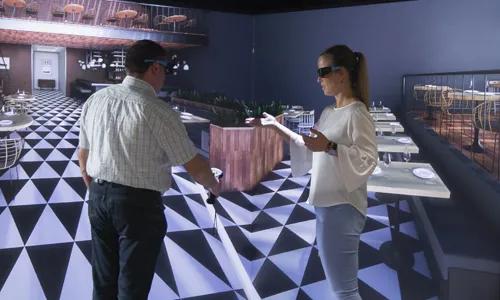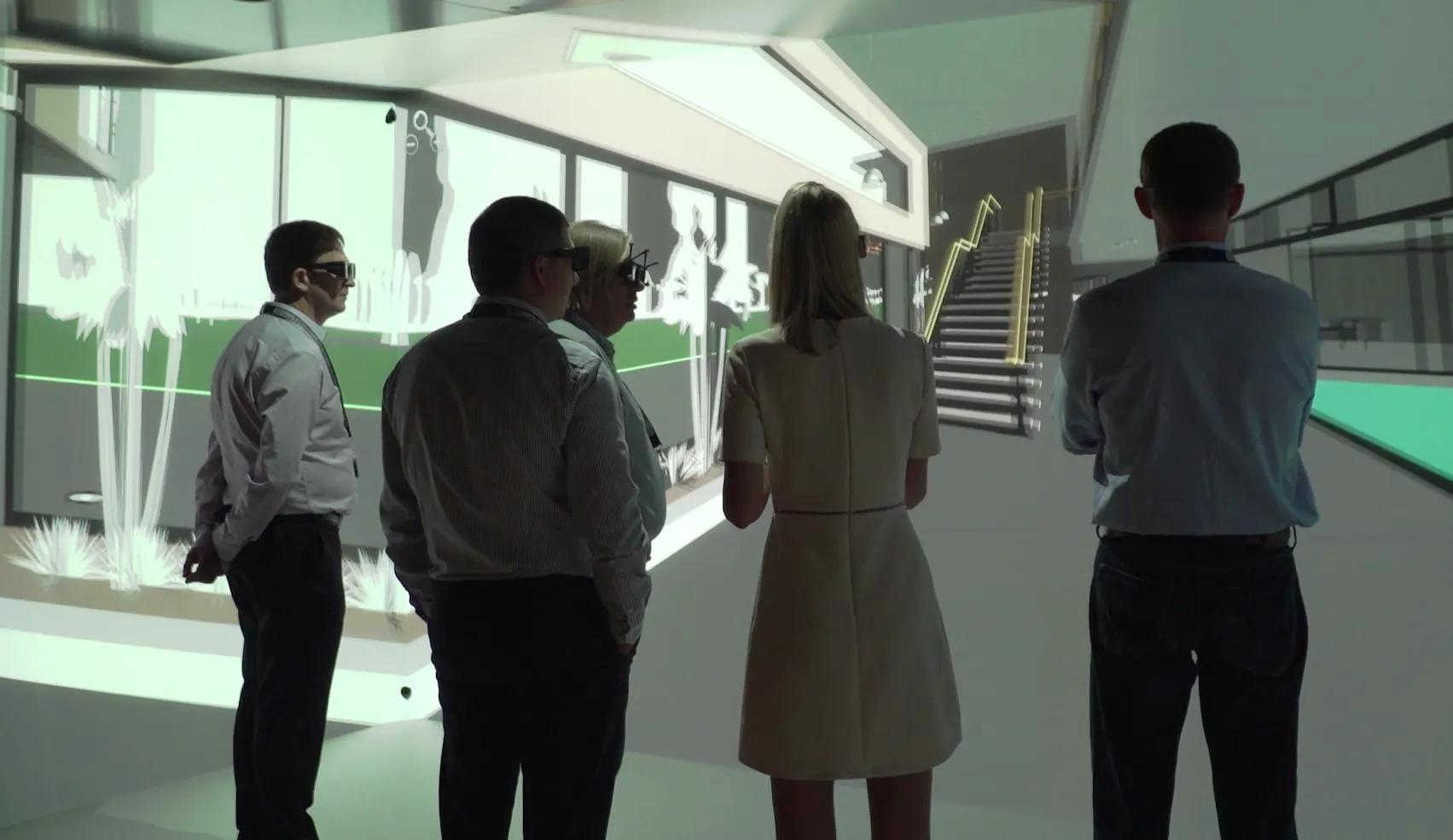VR is a simulated experience that can be similar to or completely different from the real world. Virtual Reality systems use either VR head mount devices (HMDs) or multi-projected environments to generate realistic images in a virtual environment. Where do these two solutions differ? We’ll compare the immersive, ergonomic and interactive aspect of both tools to determine the pros and cons for business applications.
Immersion
Virtual Reality is all about immersion. The individual VR head mount devices seem to be superior when it comes to that immersive feeling. The HMDs provide a realistic 360° simulation experience with a wide field of view in the virtual world. This individual type of VR is therefore most commonly used for gaming and entertainment purposes.
Throughout the years, usage of these VR headsets has been introduced in other sectors as well, like AEC or automotive design. However, the individual Virtual Reality experience does have its shortcomings for these business applications.
Group VR solutions use multi-projected environments to create a virtual world. These solutions offer immersion and simulation while also countering the disorienting and isolating character of the individual headsets.

Individual VR with HMDs vs. Group VR with wide immersive displays using light-weight 3D see-through glasses
Ergonomics
One weak point of VR HMDs is comfort. Because they isolate the user from their immediate surroundings, VR headsets can be experienced as disconcerting, disorienting and even frightening. In 2019, researchers gathered in Los Angeles to study ‘cybersickness’ and found that virtual reality headsets make between 40% and 70% of its users feel nauseated.
Although recent developments have improved the hardware devices, they still weigh quite a lot which makes it rather unpleasant to wear them for a longer period. And they also may mess up hair and make-up, making some people reluctant to put them on.
The multi-projected VR environments take these hurdles away. Group VR systems still give users the perception of being in a different reality when they focus on the digital image, but also allows them to remain connected to their physical surroundings in a joint immersive experience. In addition, the users can physically move in the virtual environment and control content movements themselves, which makes it all a less nauseating experience.
Human interaction
Research suggests that maintaining eye contact between 60-70 percent of the conversation is ideal for building rapport and trust. If one of the parties is wearing a VR head mount device, that’s impossible.
The HMDs limit most human interaction during the VR experience. You’re fully embraced with all your senses in a virtual world with video and audio, without any notion of what’s going on around you. These headsets are in essence created for use by a single person. That’s great for immersion, but not so much for collaboration.
Group VR, on the other hand, is a shared experience. The see-through glasses are needed for 3D tracking purposes, but they don’t block out external inputs. Meaning you can still see each other’s facial expressions and body language while discussing prototypes in group or interacting with stakeholders. These social interactions are valuable to reach consensus and convince prospects.

Multi-projected VR environments take away the limitations of individual VR headsets, offering a shared immersive experience to enable collaboration, interaction and engagement.
Summary
| HMD VR experience |
Shared VR experience
|
- 360° fully immersive
- Imprisoned feeling, no peripheral view
- Non-collaborative environment
- Cumbersome headsets, bad ergonomics
- Typical applications: gaming, retail
|
- Wide immersive displays – partly immersive
- Contact with real world maintained
- Collaboration with multiple people possible
- Comfortable ergonomics, see-through glasses
- Typical applications: AEC, training, automotive
|
Barco solutions
With a track record of over 20 years in VR visualization, Barco is one of the most experienced players in the business. Whatever your professional group 3D visualization needs, our portfolio consists of different group VR solutions. From the traditional one-sized approach of a powerwall, over the flexibility of a Canvas to the total immersive experience of a Cave.
You can choose between a variety of different components, including 3D-enabled projectors, high-contrast coated screens, screen management and service tools. And because we design and manufacture all components in the VR system, we have complete control of the end-to-end quality!



